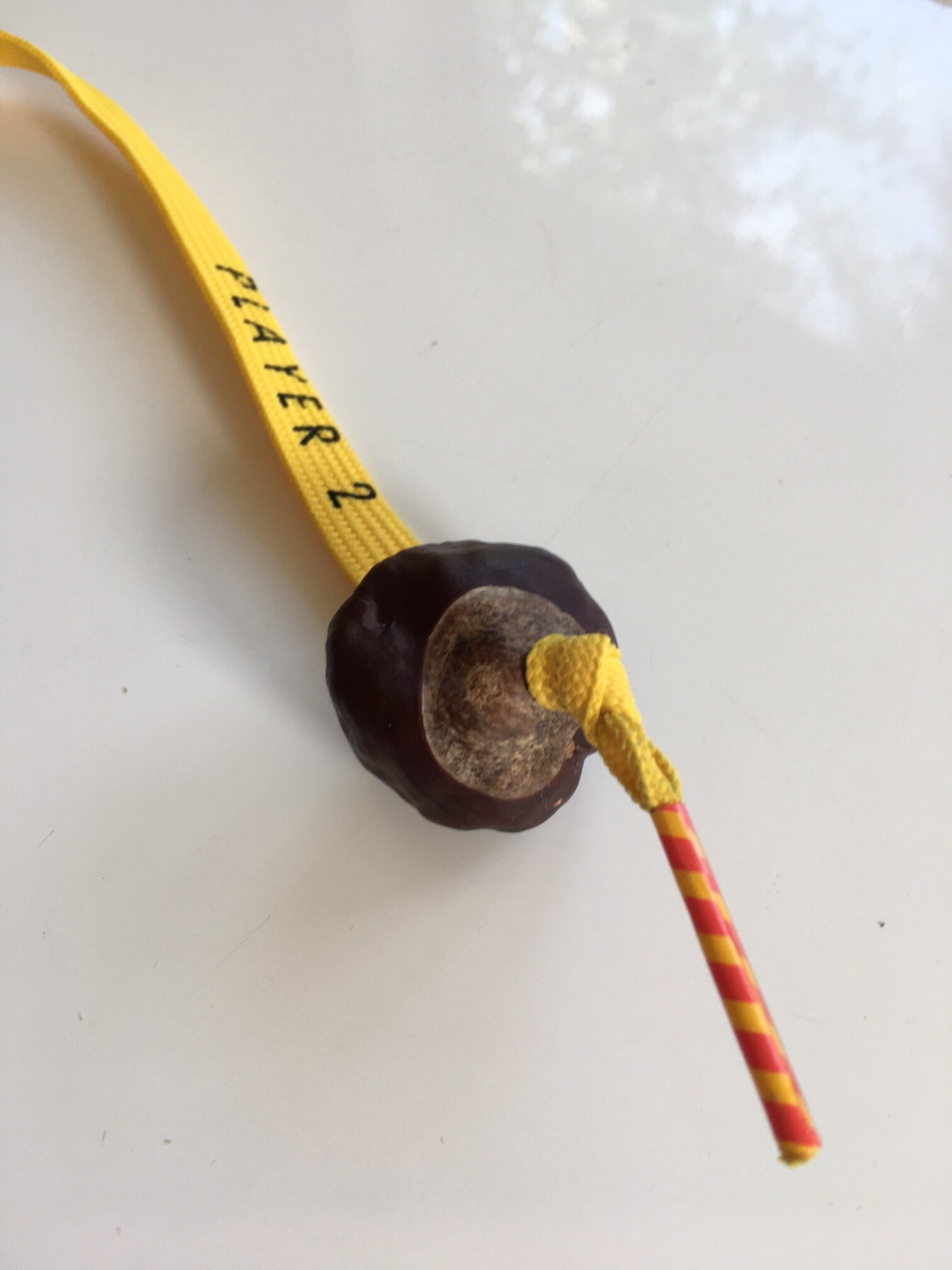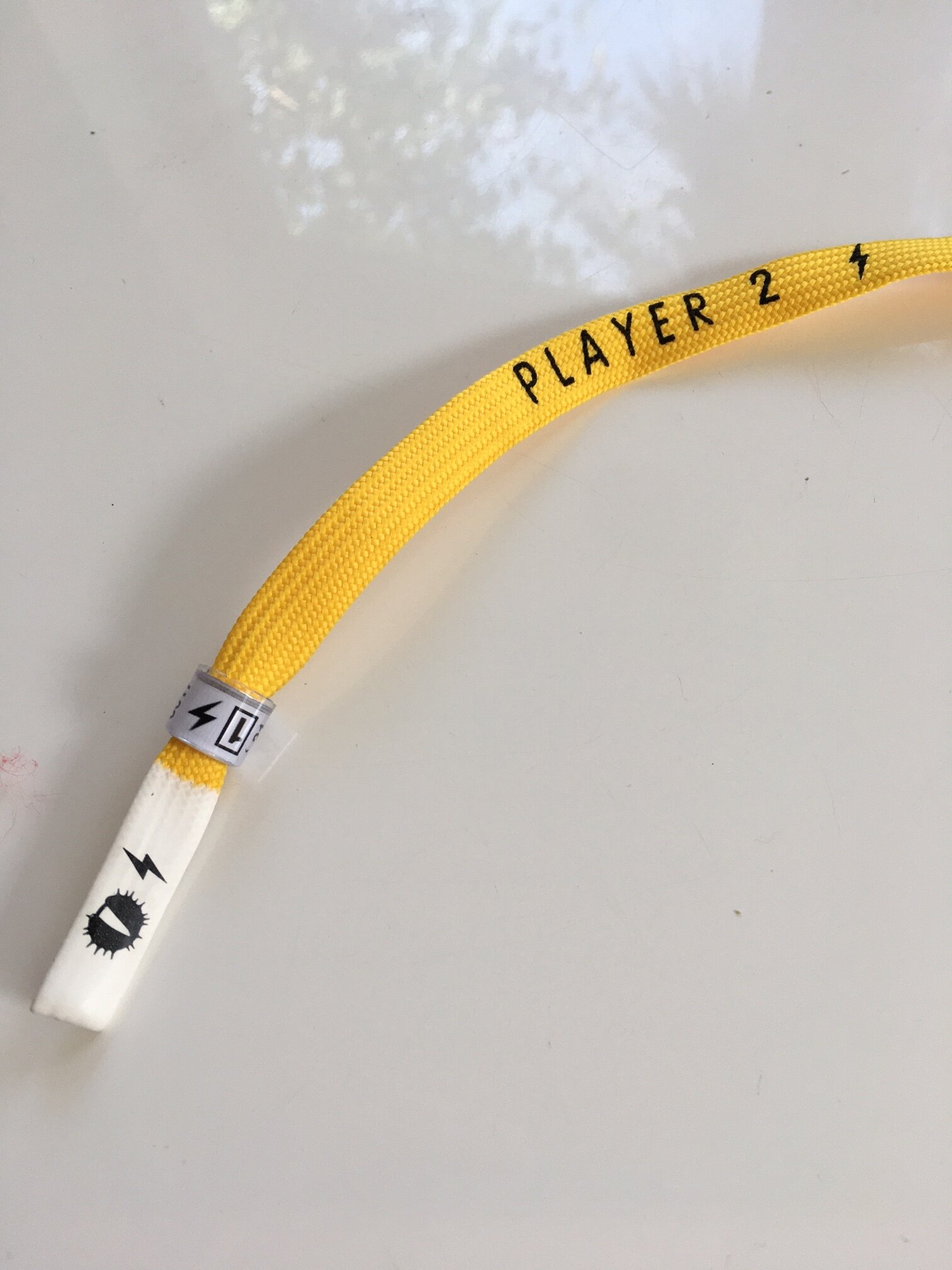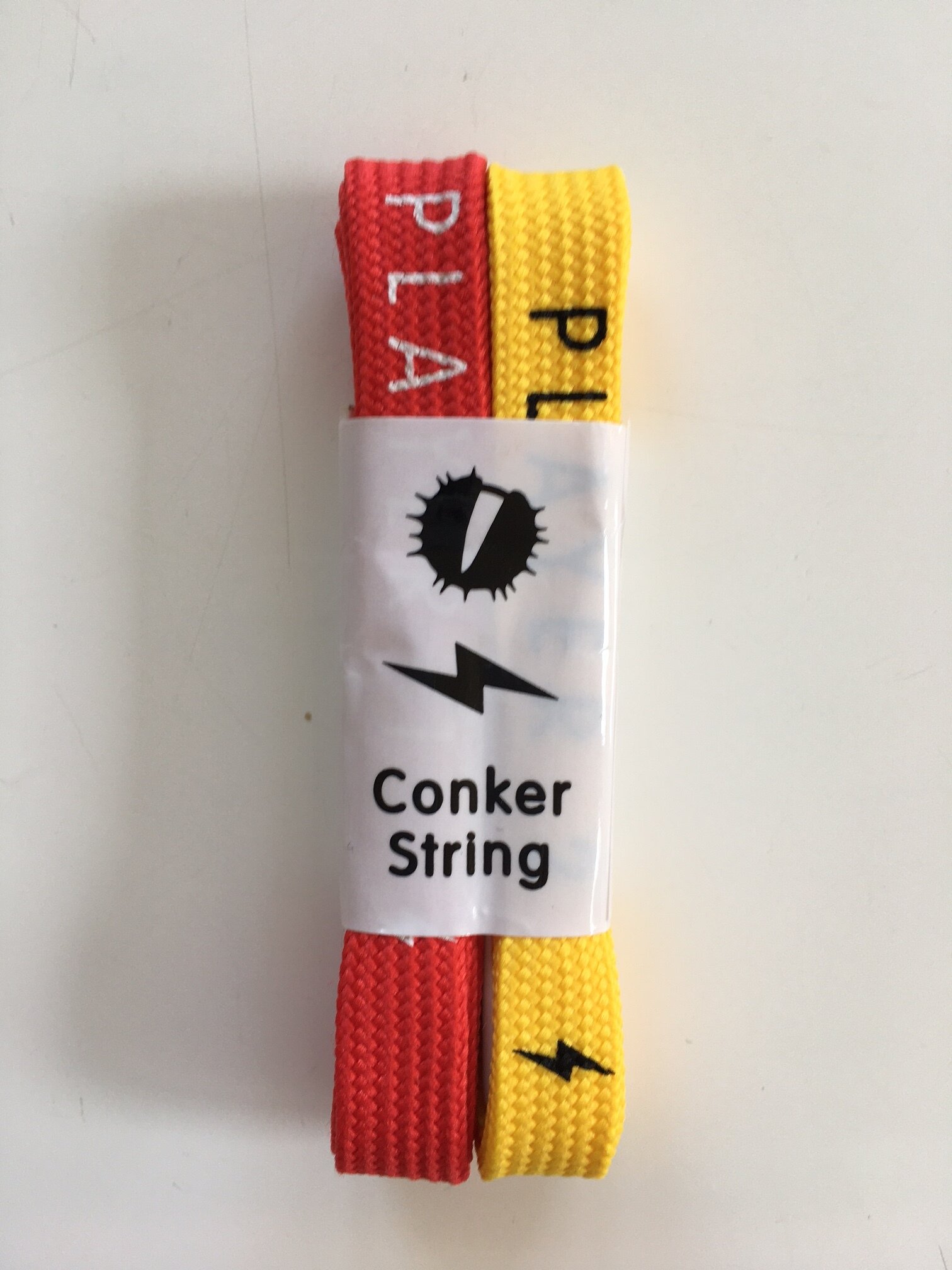Pro Guide to Conker string
There are many different types of string you could use to ‘string your conker’ ready for a fight. In most cases people classically have tended to use whatever string they find around their houses - which could be a mix of old shoelaces or kitchen string (for tying up meat for roasting) or garden twine. The most common types of strings used for playing conkers are:
Shoelace: the cheapest and traditional option for the beginner
Garden twine: garden twine is readily available, however it can tend to break fairly easily (making you susceptible to stampsies)
Kitchen string: kitchen string is similar to garden twine, and again is susceptible to breaking fairly easily
Leather lace: leather lace is for the more stylish player.
Bungee Cord: bungee cord is for the pro-player, as the elasticity gives the conker extra power and whip
Kevlar Cord: the strongest option for players - guaranteed not to break
What’s the best string for conkers
When considering the best type of string to use to play conkers, the three main considerations are:
Strength: you need a string that’s not going to break in the middle of a fight
Ease of threading: you need to have a string that can easily be threaded through a conker
Style: you need to look good when playing!
Length: you need a string that’s the right length - if too long the strong the string will get in the way, if too short you won’t be able to play properly.
Taking all of these factors into consideration, we’ve designed the ultimate conker string - combining strength, style and ease of threading. We call this the Pro Conker String, which is available from our store here.
Designing the ultimate conker string
As a starting point for designing the ‘ultimate conker string’ we first took into account the ‘history’ of conkers, understanding what types of string people have played with in the past. We then looked at where these off-the-peg (or out of the home) options for strings, and then worked on the ‘ideal design characteristics’ for a conker string, which we identified as strength, ease of threading, style and length.
The ‘ease of threading’ seemed to be the biggest challenge for most conker players - as all strings fray when cut, which means it’s difficult to push through the hole. The string that naturally works best from a threading perspective is the ‘shoelace’, as shoelaces have thin plastic tipped ends which make threading them through holes very easy. The only issue with a normal shoelace is the thin plastic tip is generally too short to fit all the way through a conker - with the average tip being 15mm.
Other than this ‘tip length issue’, the shoe lace is generally a good option for playing conkers as it’s nice and strong - compared to options like garden twine and kitchen string, which are the other two most used conker string options.
Strength is the main issue with garden twine and kitchen string, as when a player hits the opponents nut a huge amount of force is exerted on the string (and the conker!) meaning that if your string isn’t naturally strong enough it will break.
With shoelaces ticking the ’strength’ requirement and nearly ticking the ‘threading’ requirement, the shoelace was a natural starting point for designing the ultimate conker string.
All we needed to do was to fix the threading issue of shoe laces and also add a little ‘style’ - as looking good is important when playing conkers!
Fixing the conker threading issue
To fix the ‘threading issue’ (i.e. the fact that shoelace tips are normally too short) we came up with the simple solution of extending the length of the plastic tip to 30mm - doubling it from 15mm. 30mm provides enough length to go through most conkers.
Adding style
To add ‘style’ to the conker string, we worked on the concept of conkers being a ‘battle’ / game where two players are playing each other, and came up with the simple idea of branding each string ‘player 1’ and ‘player 2’ and giving each a distinctive colour - yellow and red.
As a final design finish, we thought about designing an alternative ‘tip’ (at the other end of the lace). Instead of having a 'thin plastic tip’ (needed for threading) we opted for a fatter ‘dipped tip’ which can be used to 1) help grip in the hand 2) prevent the conker and coin falling off from the other end.
Optimising length
For ‘length' we worked out what the optimal length of a conker string should be - taking into account a number of factors including:
Optimal hang-length: i.e. the ideal amount of string required for ‘presenting your conker’ ready to be hit
Grip requirements i.e. the ideal amount of string required to grip the string (so it doesn’t fly out of your hand whilst in mid-fight)
Knot length requirements i.e. leaving enough string for knotting (which isn’t much - but it’s definitely something to take into consideration)
How long should a conker string / lace be?
The best length for a conker string is 60cm / 600mm. This length of string gives you a hanging or striking length of c.40cm - with c.3cm allocated to the ‘threading tip’ of the lace, c.2cm allocated to the ‘knot’ and then 15cm allocated to the other end of the conker - for wrapping around your hand for a tight grip.
It’s important that you don’t make your conker string too long as this will mean 1) That when you ‘present’ your conker to your opponent (when you’re a receiver) your conker doesn’t hang too low 2) When you’re the ‘striker’ you have good control over your conker - as your string isn’t too long, and therefore giving you less control.
How to thread a conker
One of the biggest challenges of preparing your conker for battle is threading the string through the hole in your conker. Challenge 1: holes in conkers are generally pretty small (out of necessity) which makes it naturally quite a difficult task to get a string through it (the hole that is!). Challenge 2: when you cut a piece of string, the string will naturally fray, meaning it’s difficult to cleanly pass the string through the small / narrow hole of the conker.
So, therefore how is it best to thread a conker? If you’re using a standard piece of string then opting for a ‘sturdier’ piece of string that keeps its tautness is a good start. Then, if the end of string is frayed, then licking the end and trying to turn the end into a ‘point’ can help.
Ultimately, the best tip to easily threading a conker is to choose the right type of string or lace. Our recommendation is going for either something like a ‘leather lace’ - as leather is nice and taut. The downside of using leather lace is that leather laces aren’t the strongest, and your lace can end up snapping. Of course, the best tactic is to buy Peckham Conker Club’s specially designed conker lace which has a 30mm thin plastic tipped end that can be easily threaded through most conker holes. N.B. 30mm is twice the usual length of a shoe lace tip, and this extra length allows you to easily pass it directly through a hole (15mm is normally too short - meaning you won’t be able to easily get the lace threaded through the conker).







